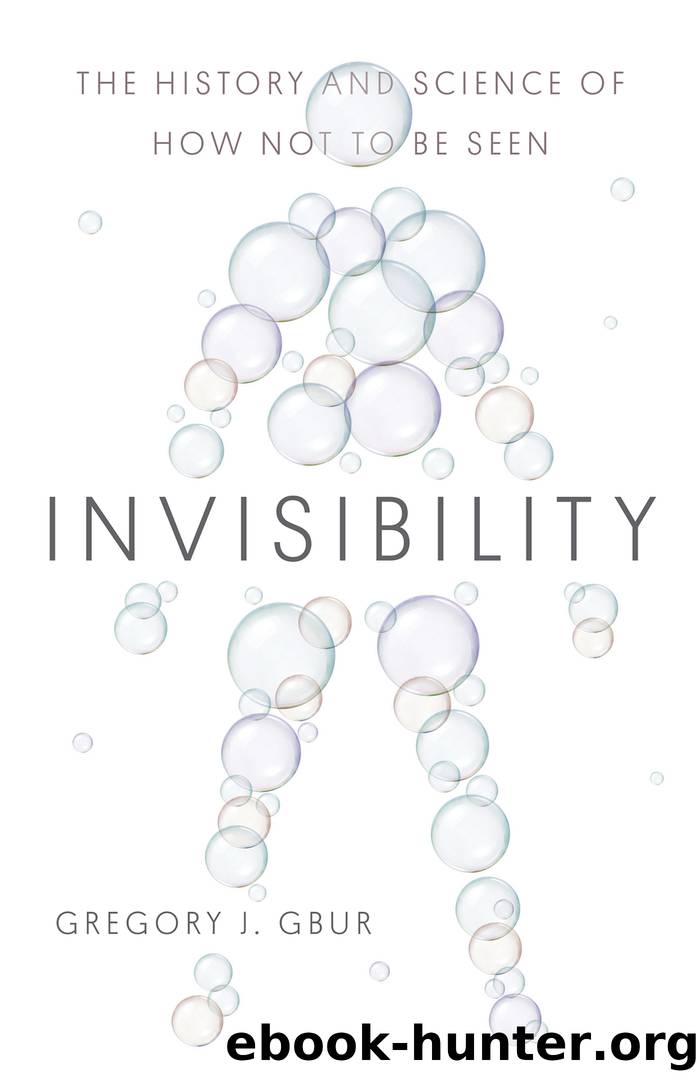Invisibility by Gregory J. Gbur

Author:Gregory J. Gbur
Language: eng
Format: epub
Publisher: Yale University Press
Published: 2023-06-15T00:00:00+00:00
11
Seeing Inside
In extenuation of Mr. Blandâs slight lapse it must be recorded that he had neither the intention nor the inclination to become a skeleton. Such an ambitious undertaking never entered his mind. Bones, in appalling number, were thrust upon him, so to speak. Or, inversely, flesh was removed. In the long run it made little difference how the change occurred. Bland suddenly and confoundingly discovered he had turned to a skeleton. He discovered also that it is the rare individual indeed who regards a skeleton either as a social equal or a desirable companion.
Thorne Smith, Skin and Bones (1933)
The discovery of X-rays in 1895 had produced not only awe and wonder but plenty of confusion and panic. The panic was significant enough to motivate journalists to debunk some of the rumored powers of the new rays. For example, the same news article from 1896 that describes âX-ray proof underclothing and other absurditiesâ leads with the following description of the limitations of X-ray imaging: âThe excited public may calm itself. Nobody, not even Mr. Edison, can see its lungs and livers. The most that can be done is to see a shadow of the skeleton of hand or footâand after all, is this not wonderful enough to satisfy anybody? Even this can be done only under special conditions.â1
The âEdisonâ referred to here is the famed inventor Thomas Edison, who had a brief infatuation with X-rays when they were discovered, and he even speculated, without justification, that they might cure blindness.2 Soon after Röntgenâs discovery, Edison assigned his assistant Clarence Madison Dally to work on X-ray technology; by 1902, Dally had developed severe radiation poisoning, and that poisoning led to his eventual death in 1904. It is thought that he is the first person to die from experimentation with radiation. Dallyâs experience led Edison to swear off X-ray research, and in 1903 he said, âDonât talk to me about X-rays; I am afraid of them.â3
Limitations and dangers notwithstanding, the public continued to associate X-rays with invisibility well into the twentieth century, and authors of science fiction and popular science alike took advantage of this to get attention. For example, the novel Skin and Bones (1933) by Thorne Smith is a comedy that imagines a man inadvertently turning himself into a skeleton by experimenting with the fluoroscopic chemicals that are used in X-ray photography: âIt will never be known definitely what chemical combination wrought the amazing change in Mr. Blandâs physical composition. Quite possibly the fumes of his strange concoction, together with an overdose of aspirin invigorated by the reaction of much raw liquor, were sufficient to create a fluoroscopic man instead of a fluoroscopic film.â4
In popular science, the cover of the February 1921 issue of the magazine Science and Invention asked the provocative question, âCan we make ourselves invisible?â and included an equally provocative image of a woman seemingly erased by a scientist with a contraption that looks like a pair of cathode ray tubes (fig. 28).
The article was written by
Download
This site does not store any files on its server. We only index and link to content provided by other sites. Please contact the content providers to delete copyright contents if any and email us, we'll remove relevant links or contents immediately.
Enlightenment Now: The Case for Reason, Science, Humanism, and Progress by Steven Pinker(7228)
A Journey Through Charms and Defence Against the Dark Arts (Harry Potter: A Journey Through…) by Pottermore Publishing(4780)
The Immortal Life of Henrietta Lacks by Rebecca Skloot(4523)
A Journey Through Divination and Astronomy by Publishing Pottermore(4340)
Elon Musk by Ashlee Vance(4023)
Origin Story: A Big History of Everything by David Christian(3648)
COSMOS by Carl Sagan(3553)
Alchemy and Alchemists by C. J. S. Thompson(3448)
Bad Pharma by Ben Goldacre(3352)
Enlightenment Now by Steven Pinker(3333)
Shadow of Night by Deborah Harkness(3295)
Inferior by Angela Saini(3276)
A Mind For Numbers: How to Excel at Math and Science (Even If You Flunked Algebra) by Barbara Oakley(3217)
Origin Story by David Christian(3145)
The Code Book by Simon Singh(3073)
Signature in the Cell: DNA and the Evidence for Intelligent Design by Stephen C. Meyer(3070)
The Elements by Theodore Gray(2994)
A Brief History of Time by Stephen Hawking(2959)
A Journey Through Potions and Herbology (A Journey Through…) by Pottermore Publishing(2826)
